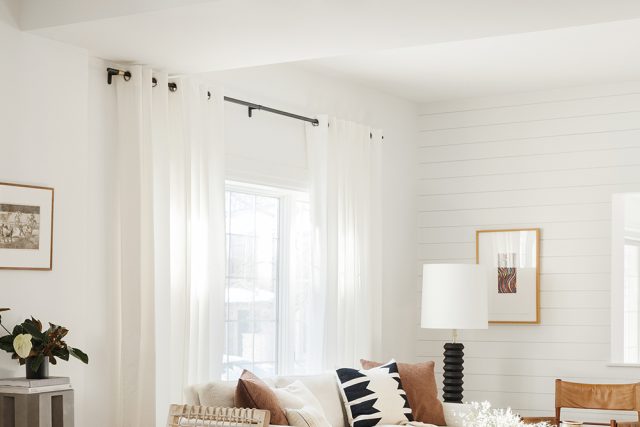Introduction
Are you tired of plain white ceilings and walls? Do you want to add some drama and depth to your space? The answer might be as simple as choosing a darker paint color for your ceiling. In this article, we’ll explore the power of paint in creating an impactful interior atmosphere, and specifically, how painting a dark ceiling with light walls can achieve a stunning result.
Why Dark Ceilings?
The idea of painting a ceiling a darker color may seem counterintuitive, but it can actually add height and interest to a room. A dark ceiling can create a sense of depth and mystery, drawing the eye upwards and creating a cozy, intimate atmosphere. It can also make the space feel more intimate and inviting.
Benefits of Light Walls
When paired with dark ceilings, light walls can provide a clean, bright contrast, balancing out the heavy, dramatic effect of the dark ceiling. Light colors on the walls can also reflect light and brighten up the space, making it feel more open and spacious.
Choosing the Right Shade
When selecting paint colors for your dark ceiling and light walls, it is important to choose shades that complement one another. The ideal scenario is for the ceiling color to be about two shades darker than the wall color. For example, a light gray shade on the walls can be paired with a charcoal or navy ceiling color. This creates a subtle contrast that enhances the visual interest of the space without making it too overwhelming.
Other Considerations
It’s important to remember that the color choice depends on the type of room and the intended atmosphere. For example, a dark paint color can make a bedroom feel cozy and intimate, while a light color can make a kitchen feel bright and welcoming.
Another important thing to consider is the amount of natural light in the room. Dark colors absorb light, so a room with little natural light may feel too dark and cramped with a dark ceiling. In such cases, painting a lighter ceiling color is a more appropriate choice.
How to Paint a Room with Dark Ceilings and Light Walls
Before starting the painting process, make sure to prepare the room by covering any furniture, flooring, or fixtures that you don’t want to get paint on.
Begin by painting the ceiling first, using a roller or paintbrush to apply the darker color. When painting the walls, use a cutting-in brush to paint along the ceiling edge first, to ensure a clean and even edge. Then, use a roller to apply the lighter color to the walls.
Finishing Touches
When the paint is dry, remove the masking tape and touch up any areas that need it. Finally, add some finishing touches to the room, like decorative pillows or curtains that complement the new color scheme.



Hottest Posts
Pendant light
Discover the Stunning Nordic Grape Chandelier
Table lamp
Rustic Charm: Country Style Table Lamp
Table lamp
Rustic Charm: Country Style Table Lamp
Floor lamp
Embracing Wabi-sabi: Ceramic Floor Lamp
Floor lamp
Embracing Wabi-sabi: Ceramic Floor Lamp
Table lamp / Lighting
Bringing Nature Indoors: Natural Rhododendron Table Lamp